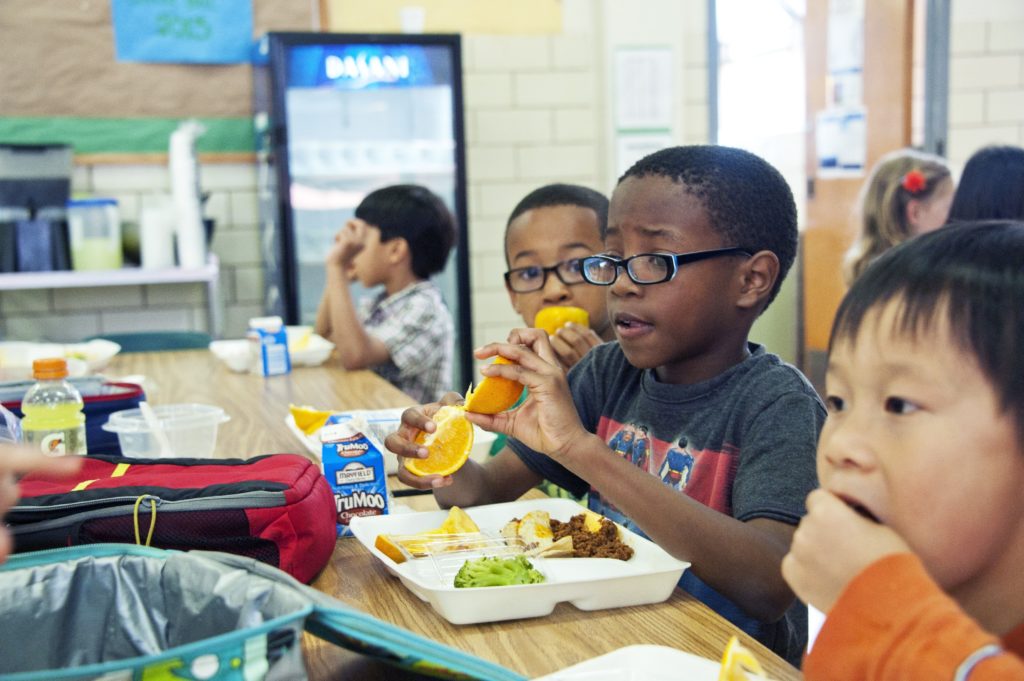The Economic Research Service (ERS), an agency housed within the United States Department of Agriculture (USDA), explains food insecurity “is a household-level economic and social condition of limited or uncertain access to adequate food”. ERS data indicates that Black and Hispanic households historically have had higher rates of food insecurity than the national average. This is the fifth in a series of periodic highlights of new and existing NALC resources that are relevant for BIPOC (Black, Indigenous, People of Color) and other underserved communities. Relevant current events and blog posts relating to these communities are available here. This post will focus on food insecurity and food access.
According to the USDA Annual Household Food Security Report, in 2019 about 10.5% of American households were food insecure. This amounts to 13.8 million households overall. However, in 2019, 19.1% (3.15 million) of non-Hispanic Black households and 15.6% (2.82 million) of Hispanic households were food insecure. In 2020, the overall rate of food insecurity remained steady at about 10.5% of American households. Yet, the rate of food insecure non-Hispanic Black households rose to 21.7% (3.63 million), and for Hispanic households the rate rose to 17.2% (3.18 million). This indicates that non-Hispanic Black and Hispanic households were more heavily impacted by food insecurity in 2020 than other racial and ethnic groups. This trend is even more evident when looking at households with children. While the overall rate of food insecurity for households with children increased only marginally (13.6% in 2019 to 14.8% in 2020), the increase in food insecurity for non-Hispanic Black households with children (23% in 2019 to 27.6% in 2020) and Hispanic households with children (17% in 2019 to 21.8% in 2020) was much more dramatic. However, the ERS reports that “in some of these food-insecure households only adults were food insecure, while in others children also experienced food insecurity.”
In its Annual Household Food Security Report, USDA does not clearly indicate household food insecurity rates for Indigenous Americans. These households are likely dispersed among the report’s four racial and ethnic groupings (non-Hispanic Black, Hispanic, White, and other). However, a 2017 study found that between 2000 and 2010, 25% of American Indians and Alaskan Natives (AI/ANs) were consistently food insecure. The study also found that AI/ANs who lived in urban areas were more likely to be food insecure than those who lived in rural areas.
Federal Nutrition Assistance Programs
Although this data is more recent, the federal government has had programs in place to combat food insecurity since the 1930s. Currently, the Food and Nutrition Service (FNS) administers 15 nutrition assistance programs. Some of these programs offer recipients credit or vouchers where they can go to a store and buy their own food. Other programs give participants food boxes. The programs that utilize food boxes often obtain the food from the Agricultural Marketing Service’s (AMS) Commodity Procurement (CP) Program. AMS explains that the CP Program provides “wholesome, high quality products, collectively called USDA Foods” to “schools, food banks, and households in communities across the country and are a vital component of our nation’s food safety net.”
Some federal resources available to learn more about the federal nutrition assistance programs available for underserved communities include:
- Supplemental Nutrition Assistance Program (SNAP) (FNS)
- Special Supplemental Nutrition Program for Women, Infants, and Children (WIC) (FNS)
- National School Lunch Program (FNS)
- Food Distribution Program on Indian Reservations (FDPIR) (FNS)
- Commodity Procurement (AMS)
Urban Agriculture and Local Food Systems
For underserved communities, barriers to food access can be more than just financial. Often, members of underserved communities face food insecurity because they are unable to access healthy food options within a certain radius of where they live. In other words, members of underserved communities may face food insecurity because they live in what’s known as a food desert. The USDA, along with the Treasury Department, and the Department of Health and Human Services, defines food deserts as “low-income census tracts with a substantial number or share of residents with low levels of access to retail outlets selling healthy and affordable food”. Many BIPOC communities have addressed the issue of food access by participating in urban agriculture and creating local food systems. Some of these efforts include petitioning for a change to land use and zoning regulations to allow for urban agriculture and starting local farmers markets. Both of these efforts not only provide locally grown fresh food to the community, but also provide economic opportunities.
Some federal resources available to learn more about urban agriculture and local food systems in underserved communities include:
- Community Food Projects Competitive Grants Program (NIFA)
- Local Foods, Local Places (EPA)
- Community Garden Guide (NRCS)
NALC and NALC Partner Resources
The NALC and our partners have a variety of resources related to food insecurity and food access. For example, the Center for Agricultural and Shale Law (CASL), a NALC partner, hosts the Agricultural Law Podcast. Special episode #1 of the podcast focused on the National School Lunch Program. CASL also maintains a series of issue trackers that provide updates on certain agricultural and food law topics. One of these issue trackers is entitled “Biden Administration’s First 100 Days on Food and Agricultural Policy” which highlights many of the Biden Administration’s goals of reducing food insecurity.
Along with our partners, the NALC has also published several resources addressing food insecurity and food access:
- Indigenous Food and Agriculture Reading Room
- Nutrition Programs Reading Room
- Local Food Systems Reading Room
- Direct Farm Business Guides (NALC & others, 2015)
Finally, the NALC blog has a section devoted to nutrition programs which includes daily updates regarding the federal nutrition programs, and articles exploring aspects of certain programs. A recent post discusses USDA’s recent update to the Thrifty Food Plan, a move that increased SNAP benefits on average by $36.24 per person, per month.
**This article was written by former NALC Staff Attorney Jana Caracciolo.
